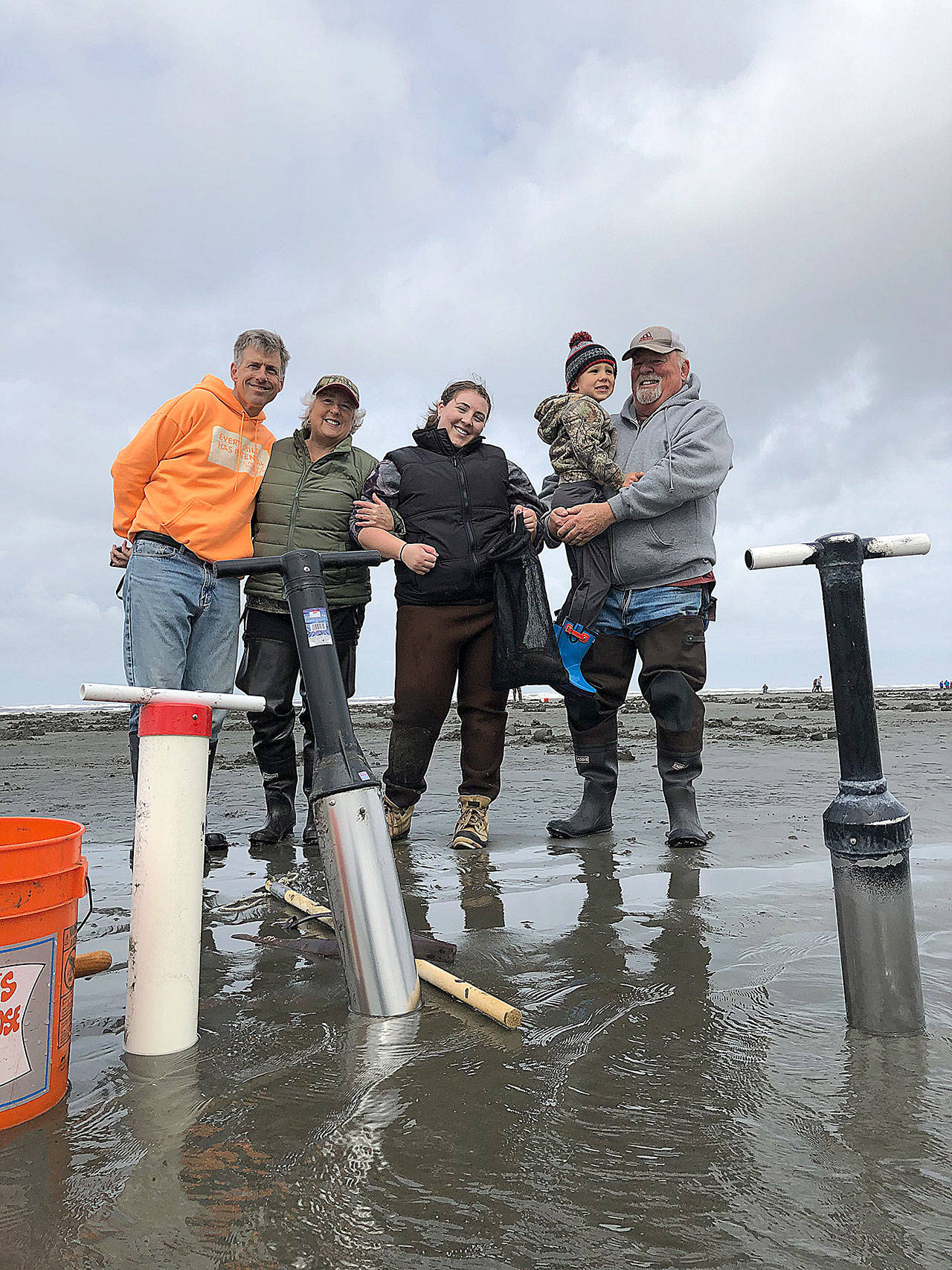More than 15,000 diggers hit Mocrocks Beach for the final four days of a drastically shortened razor clam season last week.
“It was a very busy few days of razor clam harvesting at Mocrocks,” said Dan Ayres, Washington Department of Fish and Wildlife Coastal Shellfish Manager. “Between the very long fishery closure due to domoic acid issues and the apparent COVID-driven desire to get outside likely combine to draw so many diggers to the beach.”
The estimated effort breaks down like this:
Monday, May 21, the first day of the dig with a decent -0.7 tide, had 450 diggers hit the beach. From there, the numbers explode.
Wednesday, May 26, 2,200 people dug for razor clams at Mocrocks during a -1.6 morning tide.
Friday, May 28, the unofficial start of the long Memorial Day Weekend, the effort more than doubled to 4,500 diggers, with an excellent -2.5 tide.
Sunday, May 30, right in the middle of holiday weekend and the last dig of the season, an estimated 8,700 diggers were on the beach for the morning -1.6 tide. All told, 15,850 diggers were estimated to have hit the beach over the four-day dig.
The effort was apparent for anyone traveling Ocean Beach Road early Sunday afternoon, after the tide. Facebook posts showed a 4-mile backup on the road as diggers who weren’t staying for the weekend headed for home.
Success was high, said Ayres.
“The good news is almost everyone left the beach with a limit of very nice clams,” said Ayres. “I suspect there were fun Memorial Day razor clam feeds for many.”
With a limit of 15 razor clams per digger, that comes out to about 237,750 razor clams, assuming limits for all. There were some nice sized clams as well, not surprising given the shortened season and extremely low tides offering access to digging areas more often than not covered up during lesser tides.
The 2020-21 razor clam season started off with great promise. Digs ended early in May 2020 due to COVID concerns, too many people concentrated in small stretches of beaches. Seasons usually begin in October, but in September 2020 digs were announced at several beaches, with a lot of tentative dates scheduled through the fall and winter and into the spring.
However, in October, levels of domoic acid, a marine toxin that can be harmful to humans at high levels, began to rise above levels for safe consumption, and digs were shut down. The state continued to test, and found the amount of “bounce-around” — domoic acid’s tendency to drop in levels one week, then rebound the next — wouldn’t allow for two weeks’ of safe levels in a row at any beach, required to open any beach.
Finally, levels at Mocrocks and Mocrocks alone dipped below the state threshold and two digs were announced May 15 and 17, followed by the four digs last week, the last four of the season — no digs are allowed after the end of May to protect spawning stock, said Ayres.
“We will now begin our summer stock assessment and start planning for the fall,” said Ayres.


